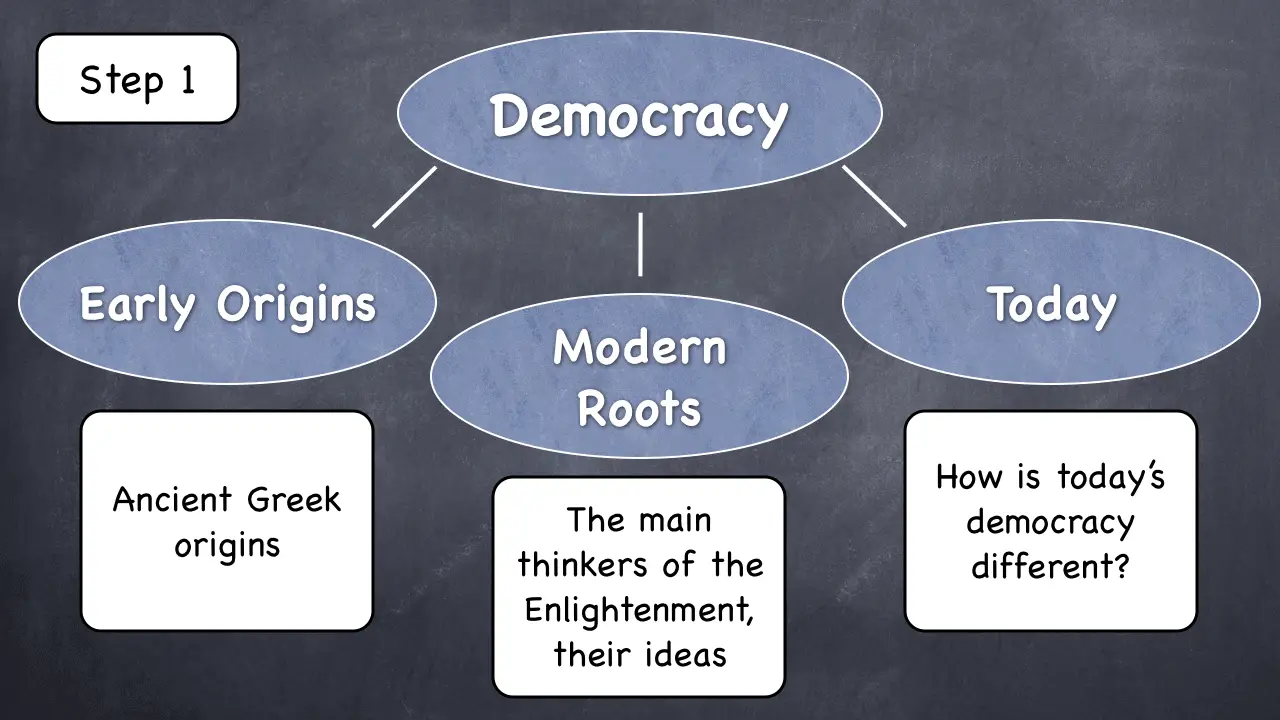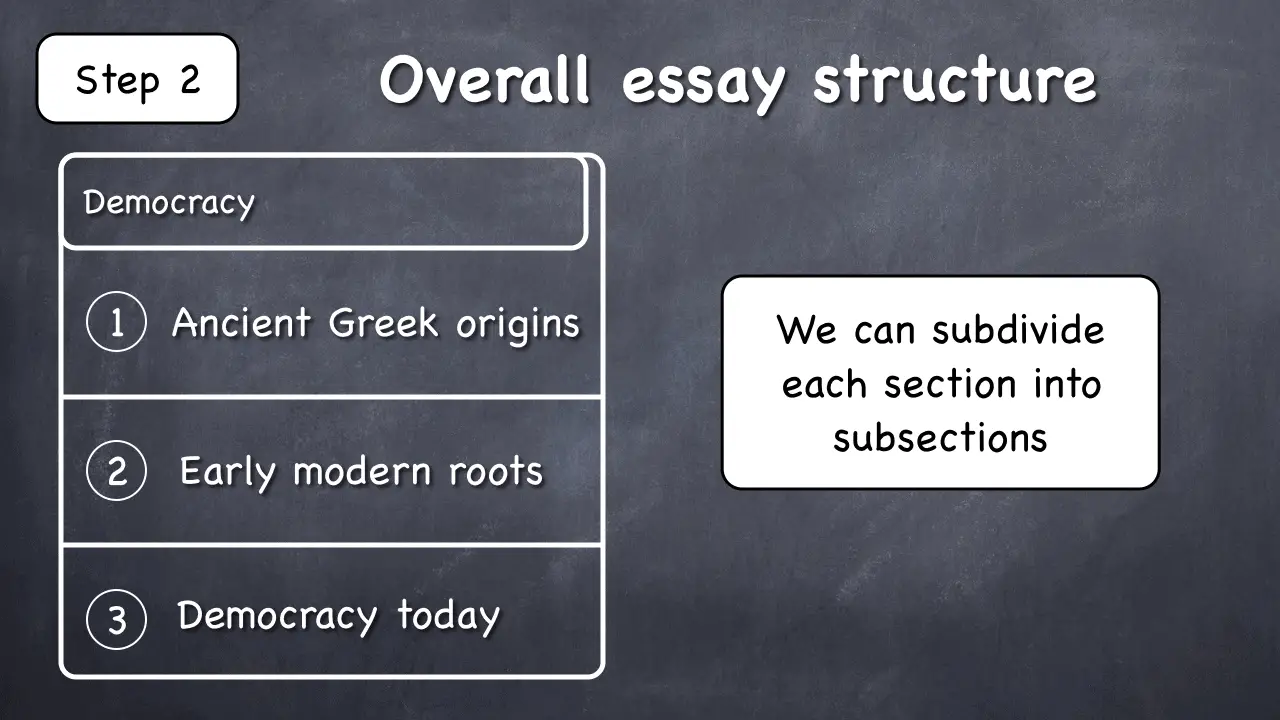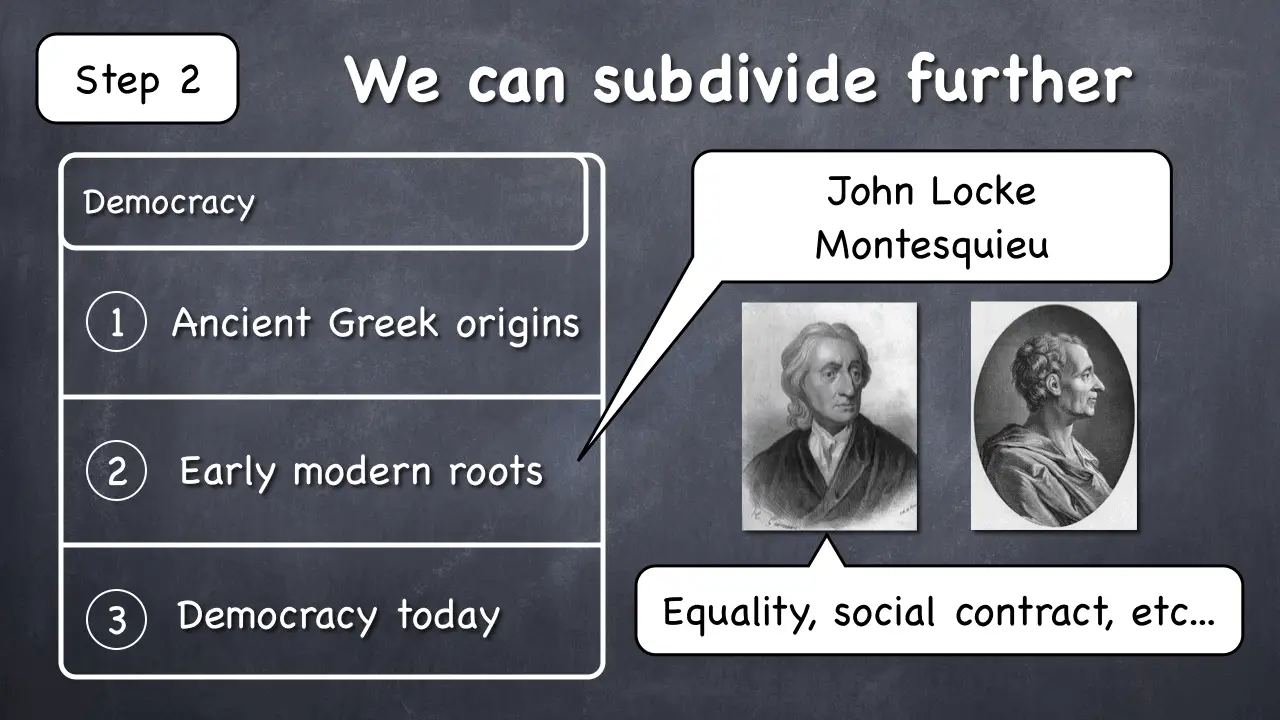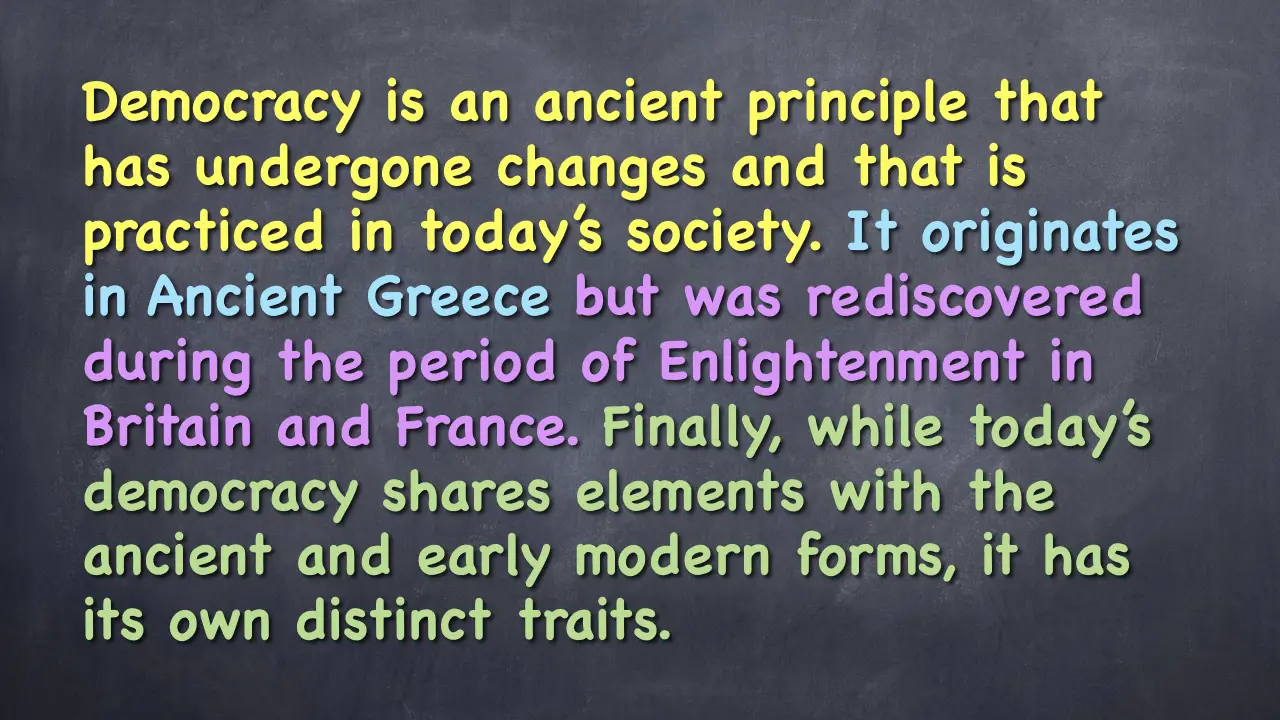One of my subscribers, Nadir, is asking, “How do I write a thesis about democracy?”
That’s a great question.
We’re going to break this task into three steps. Let’s do it.
Step 1: We’re going to break up “democracy,” meaning the concept of democracy, into more manageable parts.
Step 2: We’re going to come up with an overall structure, which is almost an equivalent of creating an outline.
Step 3: Finally, we’re going to write out the thesis statement. Let’s do it.
Step 1. How can we break democracy into manageable parts?
We’ll use the Power of Three because it’s the easiest way to break up a topic. The power of three just means using three supporting ideas as evidence in our body of the essay.
How can we divide democracy into three parts? How can we discuss democracy in three different ways or three different sections of a paper?

Supporting Idea 1. Early origins.
These would be the origins of democracy that take their root in Ancient Greece.
Supporting Idea 2. Modern roots of today’s democracy.
So what would be the modern roots? The modern roots are the main thinkers of the Enlightenment and their ideas.
These are such prominent philosophers as John Locke, Rousseau, and Montesquieu.
The Age of Enlightenment is also known as the Age of Reason, and that is where today’s democracy really takes root.
Supporting Idea 3. Democracy today.
This would answer the question, how is today’s democracy different from democracy of the early origins, such as in ancient Greece, and during the Age of Enlightenment?
Step 2. Coming up with the overall structure.
We know that we have three sections because we used the power of three to get three supporting ideas. So, here is how we can structure our overall argument.

In section 1, we’re going to talk about the ancient Greek origins of democracy.
In section 2, we’re going to talk about its modern roots.
In section 3, we’ll discuss democracy today.
What will these sections contain?
In Section 1, we’re really talking about Athenian democracy. And we can subdivide this topic into more than one subtopic.
In ancient Greece, principles with which we are familiar were born. These include voting for rulers and to pass legislation. This could be one subsection.
But we can also note some peculiarities of that ancient kind of democracy.
For example, only non-slave men could vote, which made up only about 10-15% of the population.
As a result, we now have two subsections of main section 1. Essentially, we are talking about two things:
- The familiar principles of Athenian democracy
- The peculiarities of its early days
Section 2 is about the early modern roots of democracy.
We’re talking about some of the main thinkers. The two philosophers who come up right away if you do a search on Google are John Locke and Montesquieu.
These two names give us two subsections. See how it works?
Could we subdivide them further? How can we discuss Johns Locke and Montesquieu? Well, we can discuss them in terms of their ideas.
For example, John Locke was concerned with such concepts as equality, social contract, and private property. We can simply write about several concepts from each of these thinkers to have a neat little subsection about each one.
You can write a paragraph on equality, and then a paragraph on social contract, and so on.

In order to discuss these thinkers, all we would have to do is discuss their ideas. Since each of them had more than one idea, this gives us a wonderful way to keep writing.
How much you want to subdivide your sections will depend on how big your paper has to be.
If you need only three to four pages, maybe you don’t have to go that deep. But if you have to write a 10-page or a 15-page paper, this way of dividing into subsections would be very helpful to you.
Section 3 is about Democracy today.
Modern democracy has its similarities to the Ancient Greek origins and to the early modern roots. It also has its differences from them.
The similarities can include some of the main ideas that remain constant at all times.
The differences can include some of the peculiarities of each time period, such as voter rights or electronic or mail-in voting.
And we’re ready to write out our thesis statement, based on all the preparatory work we just did.
Step 3. Writing out the thesis statement.
We are totally ready to write this thesis statement.
And here we are.
Democracy is an ancient principle that has undergone changes and that is practiced in today’s society. It originates in Ancient Greece but was rediscovered during the period of Enlightenment in Britain and France. While today’s democracy shares elements with the ancient and early modern forms, it has its own distinct traits.
Let’s take a closer look at this thesis statement.
The first sentence should summarize your entire essay completely and perfectly. And that’s exactly what we’re doing here.
The remaining sentences must outline the supporting points. We combined the first two supporting points in the second sentence. And the third sentence is devoted to the third supporting point.
Let’s take a look.

And there you have it: three steps to going from one concept, which in this case is Democracy, to a full thesis statement.
I wrote a detailed tutorial on how to write a thesis statement on any topic. This would be your best next step.
Hope this was helpful!
Tutor Phil
